Big Ideas On Display At IDF
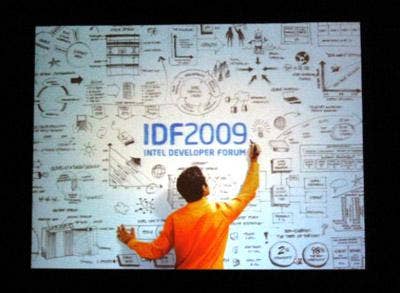
The Intel Developer Forum is all about generating the ideas that will power the future of computing. For this year's IDF in San Francisco, Intel pushed a theme of the "big idea." The Santa Clara, Calif.-based chip giant situated whiteboards around the Moscone Center venue, inviting attendees to jot down their ideas for future technology products and breakthroughs. In the following pages, we'll look at some of the coolest ideas that have made the leap into actual product offerings, all on display at IDF.
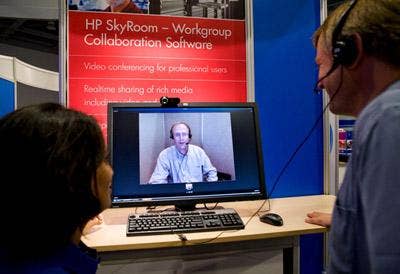
Hewlett-Packard this week launched its new videoconferencing software, SkyRoom, in conjunction with IDF. SkyRoom, which is priced at $149 per license but also comes bundled in for free with HP workstations, allows up to four people to hold a videoconference over a standard business network, with no subscription fees. HP is marketing SkyRoom as a timely alternative to business travel, given the state of the economy, and points out that a videoconference with four people using SkyRoom is cheaper than the cost of round-trip airfare from San Francisco to Los Angeles.
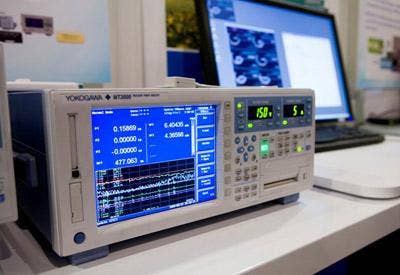
IBM has made a splash in the channel with Smart Grid technology like this power monitoring station, which combines hardware from partners like Intel and Yokogawa with IBM software and services expertise. IBM has more than 50 Smart Grid engagements around the world, including a 100-user pilot project announced this week in Fayetteville, N.C., through IBM solution provider Consert.
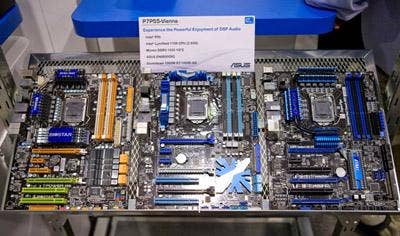
Intel's recently released Xeon 3400 series processors -- code-named Lynnfield -- bring the chip giant's next-generation Nehalem microarchitecture to the single-socket server market. With an economic recovery in the offing and businesses in dire need of technology refreshes, Lynnfield's release could be just the right medicine for motherboard maker Asus and its own whitebox channel as they build workstations, storage boxes and server-based appliances for midmarket customers and ISVs.
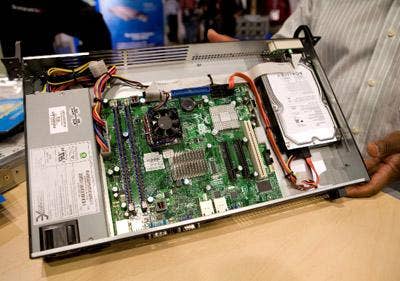
Bet you don't think of servers when Intel talks up its ultra-low-power Atom processors, which are ostensibly designed for netbooks and mobile Internet devices (MIDs). But SuperMicro didn't get to where it is today by thinking like everybody else. The motherboard and chassis maker has devoted a whole category of its Super Server lineup to the Atom, with building blocks available for systems based on both the single-core Atom 230 and dual-core Atom 330. Super Micro recommends its Atom platforms for embedded industrial PC applications and network appliances, as well as for storage, print and e-mail servers.
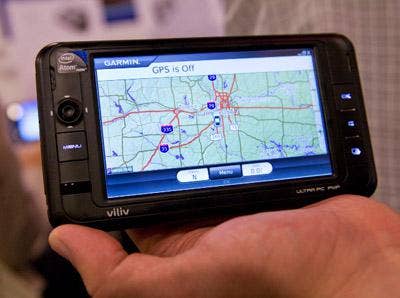
Here we see Intel's Atom chip in a more familiar environment -- a next-generation mobile Internet device (MID) from Viliv, which sports a video camera and software editing suite to go along with Intel's own improved Linux-based Moblin operating system. Nearly two years ago, Intel touted MIDs as the next big thing -- only to watch netbook sales blow by the slower growth of these handheld PCs. But with solid Atom-based hardware for handhelds now in place and the even-better Moorestown platform due out next year, could 2010 finally be the year of the MID?
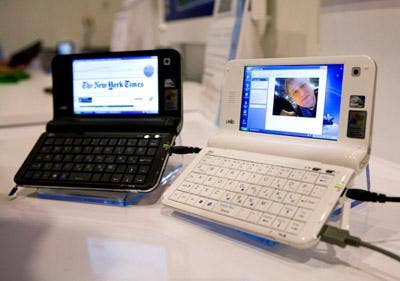
Combining the functionality of a netbook with the pocket-size portability of a MID, these Intel Atom-based reference designs demonstrate that the future of handheld form factor design really is wide open. At least if it's a future where humans have really, really small fingers, that is.
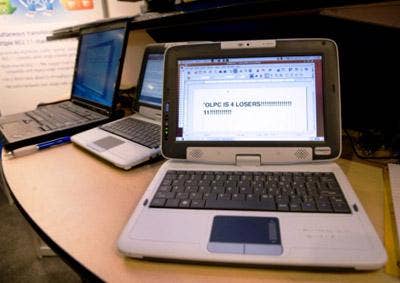
It wouldn't be IDF without Classmates, though the buzz around these education-targeted netbooks wasn't as audible at the 2009 event as it has been in years past. But despite some reorganizations within the Classmate Project, Intel hasn't stood still on advancing the core technology in recent months, adding capabilities like wireless and desktop sharing to these netbooks while working with channel partners like Equus Computer Systems to build Classmate whitebooks.
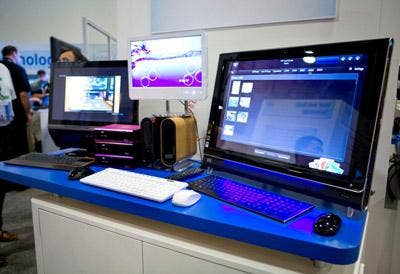
So-called Lifestyle PCs like these all-in-one desktops from Hewlett-Packard and other vendors are catching on with consumers, as well as in certain business verticals like the hospitality industry. It's all about the display and ease-of-use in this category -- think touch-screen interfaces and big-button icons -- while portability and desktop real-estate savings are also key selling points. Just don't expect much in the way of upgradability or hardware customization with these units.
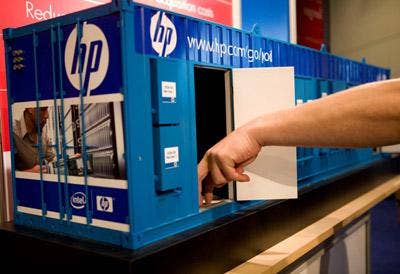
HP, Sun and smaller companies like Verari Systems of San Diego, want to put your next data center in a box -- a modular shipping container, to be precise. Containerized data centers like this mock-up HP installation on display at IDF provide customers with impressive compute power that's ready to be fired up the minute it's dropped off the truck and plunked down on their premises. Benefits besides the plug-and-play factor include portability and money saved from building out physical infrastructure to expand data center operations.
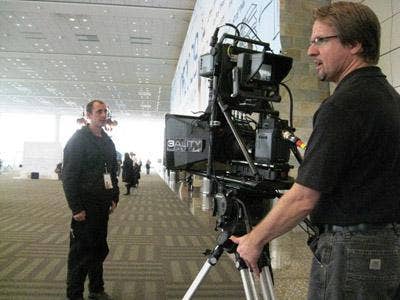
This 3-D video camera rig from 3ality Digital of Burbank, Calif., is one of the engines driving what Intel believes will be a revolution in television. Camera operator Scott Steel, right, shot 3ality CTO Howard Postley (not pictured) during Intel CTO Justin Rattner's Thursday presentation on the future of TV, beaming Postley's three-dimensional image onto a screen in the keynote hall for a realtime conversation with Rattner.
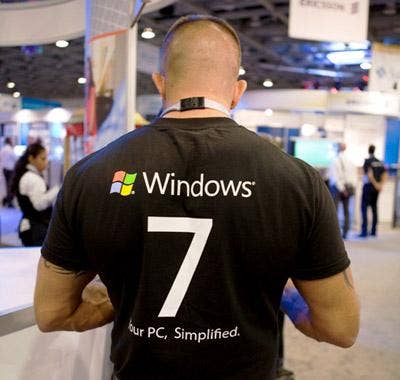
The upcoming release of Microsoft's Windows 7 operating system has much of the hardware world crossing their fingers for fast, widespread adoption in the commercial market. Glass-half-full types point out that signs of economic recovery indicate that businesses should be ready to refresh their PC fleets in 2010. Their glass-half-empty counterparts don't disagree -- but only because Win 7 doesn't have to sell that well to beat out the debacle that was Windows Vista.
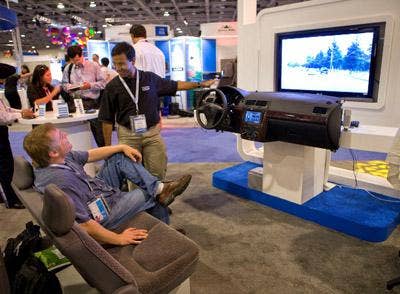
Intel's "connected auto" is a dashboard entertainment system that plays content from music players, smartphones and other mobile computing devices that are within wireless range of the central console. We just like the fact that you can sit in the demo version and not get carsick.

Seagate's Monty Forehand demonstrates some of the data security features that the storage vendor has developed around Intel's latest iteration of its vPro technology for notebooks. Lost your laptop? Never fear -- now Seagate can brick the hard drive remotely so all your precious data never falls into the wrong hands.
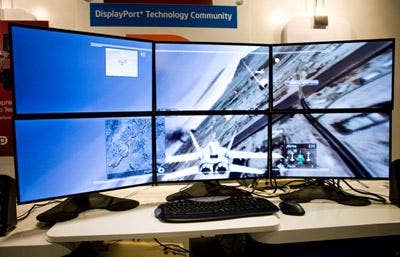
Advanced Micro Device's ATI graphics have been spotted at IDF before. Hey, Intel doesn't ship discrete graphics, the future potential of its Larrabee project notwithstanding. But there's a big difference between sticking the odd ATI Radeon video card in an Intel-powered gaming rig and giving your main CPU rival its own booth at the IDF Technology Showcase. At any rate, AMD was at IDF to show off its brand-new Eyefinity multidisplay technology on six thin-bezel Samsung displays -- in a booth that was situated all the way at the back of the exhibition center, natch.